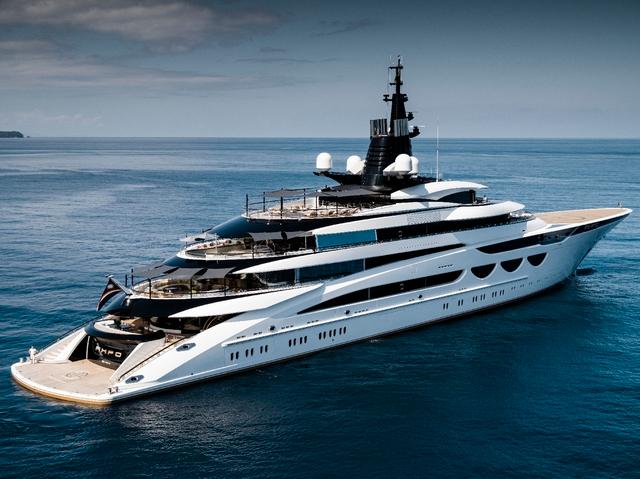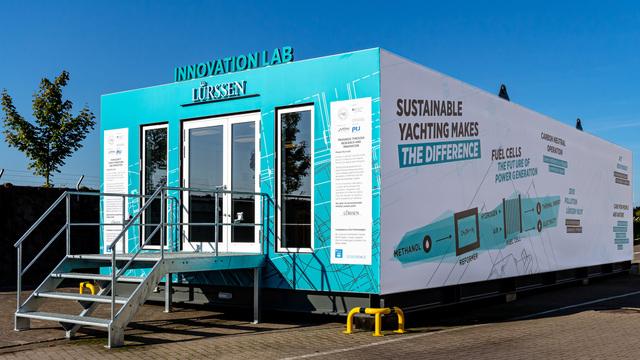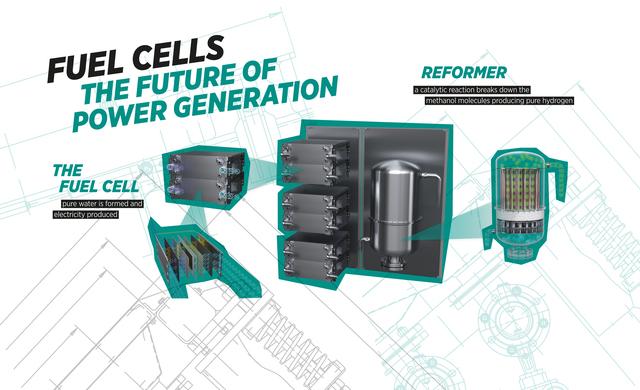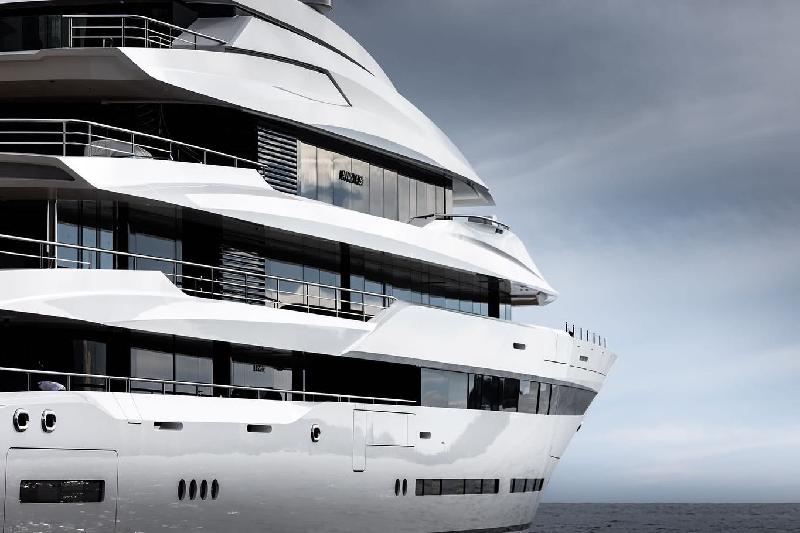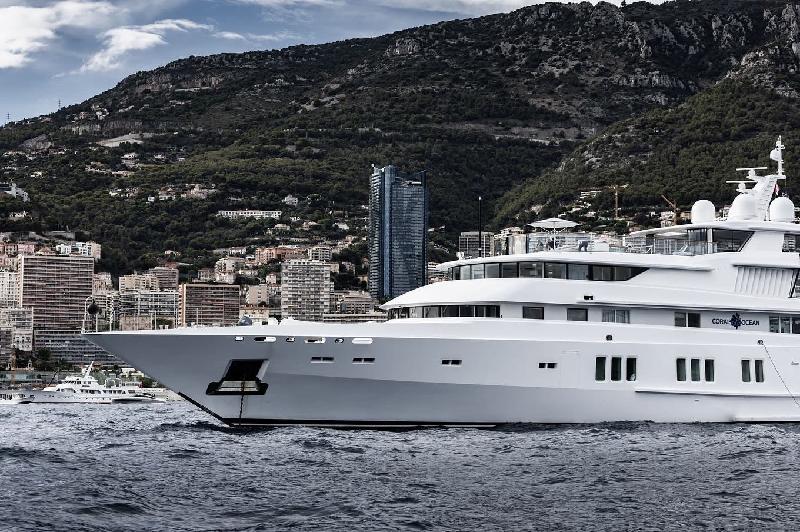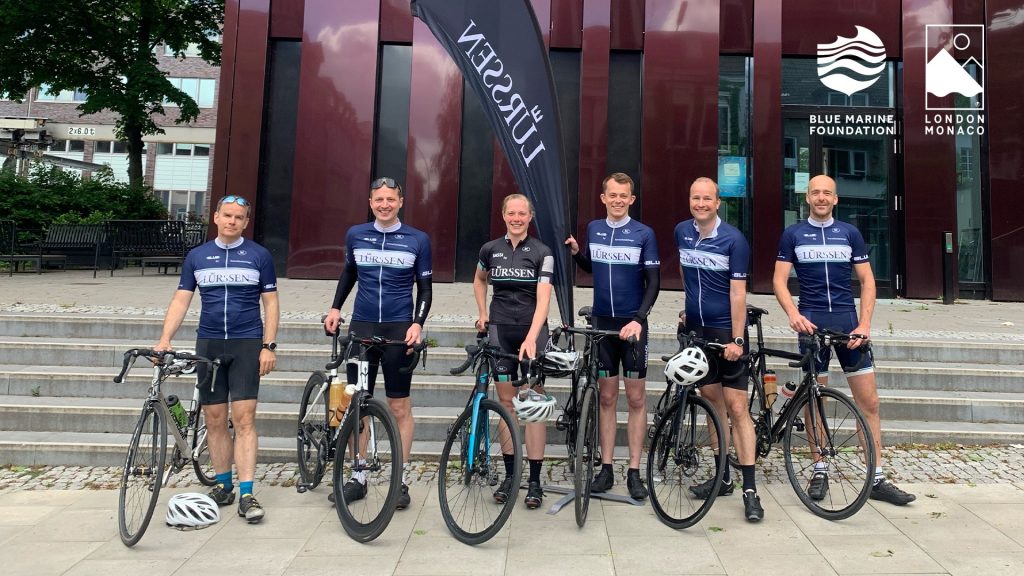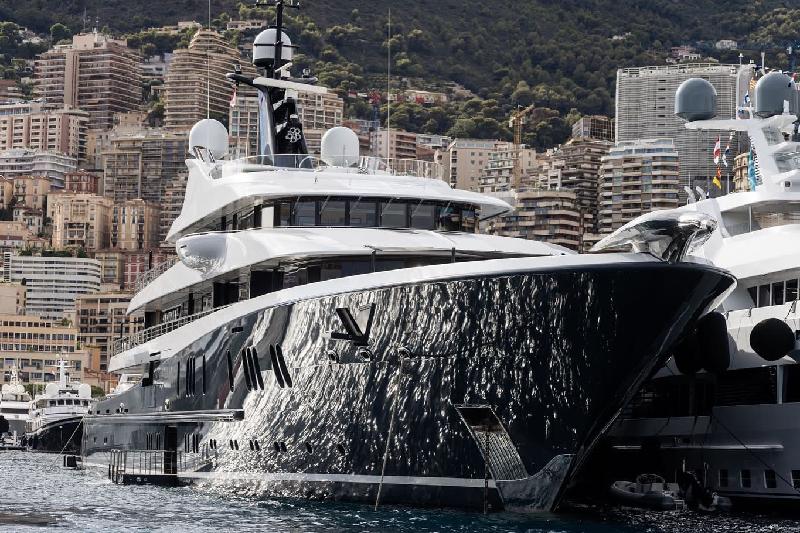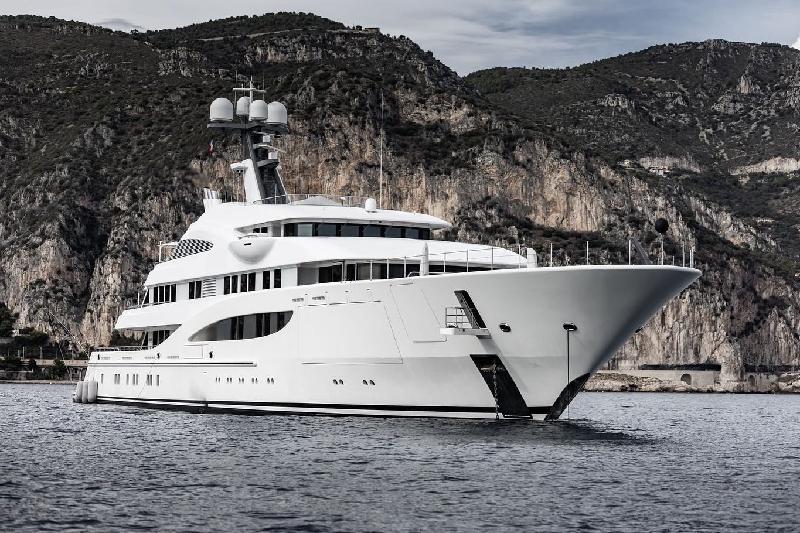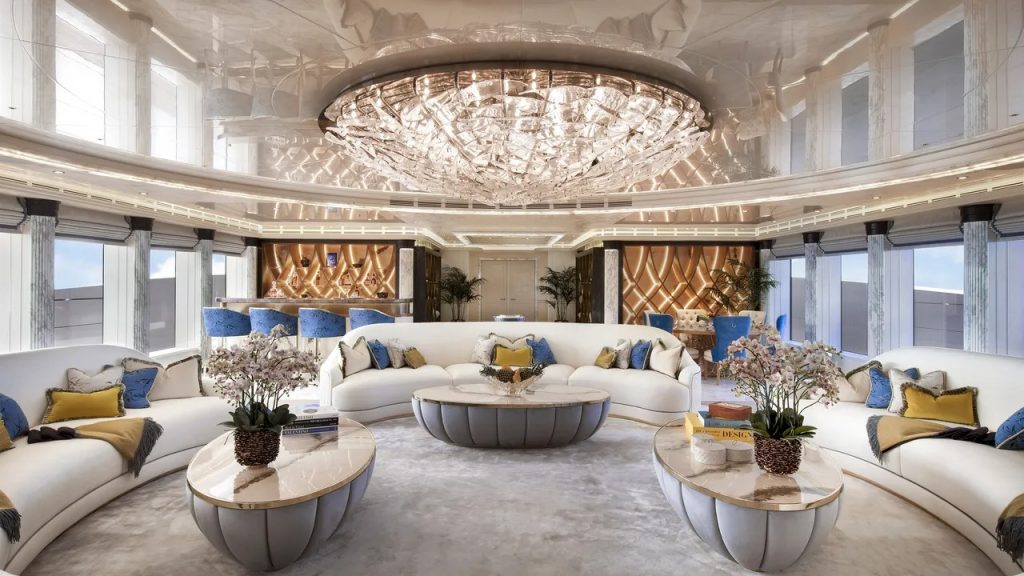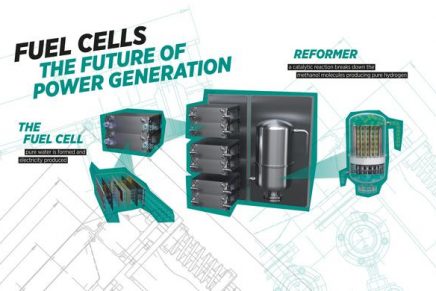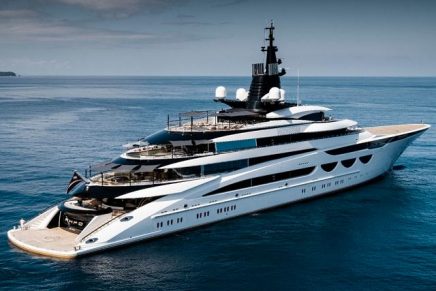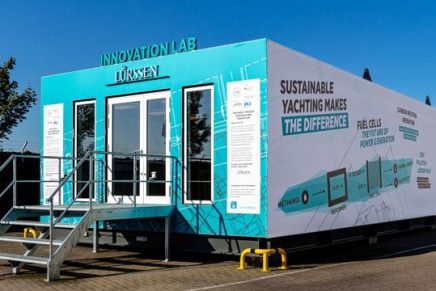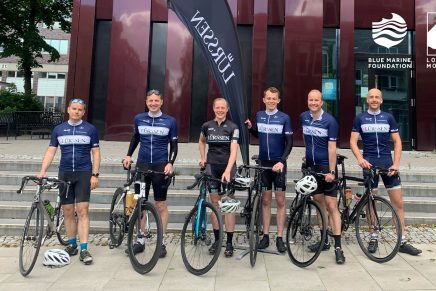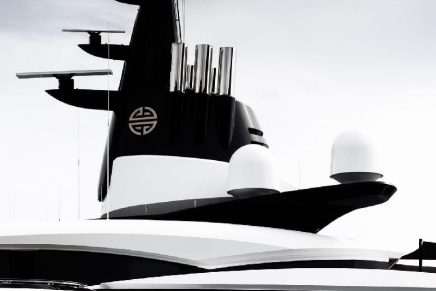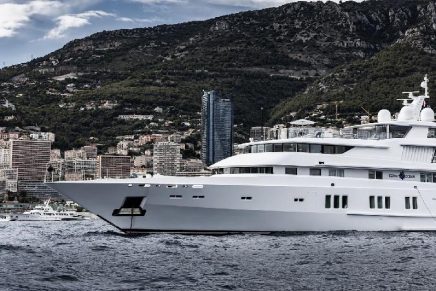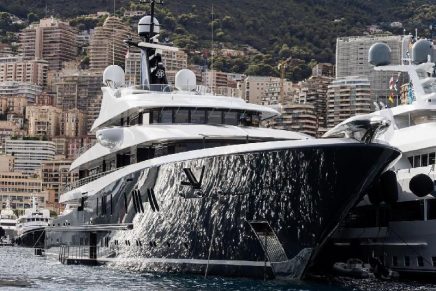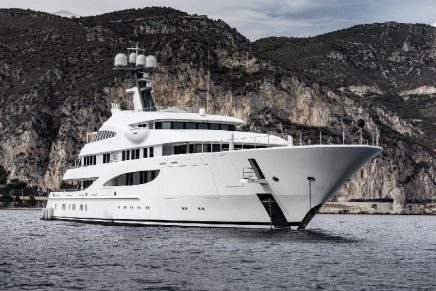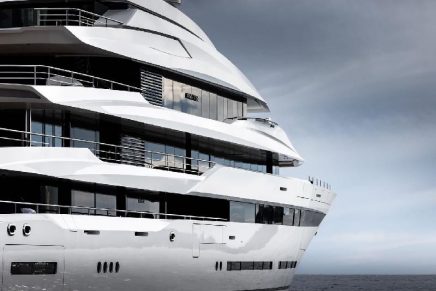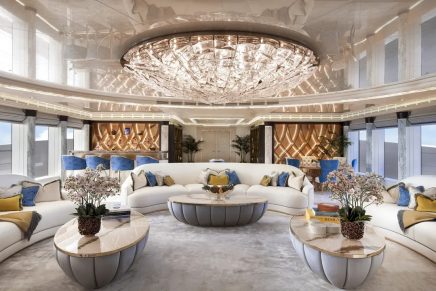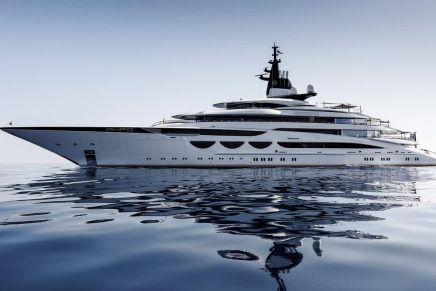As the largest yacht on display at the recent Monaco Yacht Show, Lürssen’s Ahpo superyacht was the queen of the yachting show. AHPO is a striking and bespoke 115-metre superyacht built for a repeat client who previously owned an 86-metre Lürssen.
In addition to the exhibition of Ahpo superyacht, Lürssen shipyard informed their visitors about innovative topics such as Fuel Cell Technology at their stand. Visitors took a virtual tour of the Innovation Lab where Lürssen is testing the fuel cell or have a unique model explain how a fuel cell works that is powered by hydrogen reformed by methanol.
The Innovation Laboratory
Last year Lürssen announced the building of their first yacht with fuel cell technology as well as the set-up of an Innovation Laboratory at their yard in Bremen.
The Innovation Laboratory is a demonstration facility to simulate and test the integration and operation of a Marine Hybrid Fuel Cell System on board a yacht powered by methanol. The fuel cell was integrated into the Innovation Lab this summer and has already successfully completed the first test runs. Under real life ambient conditions and with all required auxiliary systems this demonstration plant can be considered to be the final preparations to bring fuels cells on board a yacht successfully.
Lürssen has committed to a strategic partnership with Freudenberg, one of the leading experts for maritime fuel cells and a global technology group with around 50,000 employees in 60 countries. An essential milestone in maritime fuel cell technology is that Freudenberg has recently received type approval from RINA. The safety concept thus conforms to the IMO Interim Guideline and is approved for use on all types of ships.
This is also the world’s first type approval for a maritime fuel cell system with integrated fuel reforming for the fuel type methanol. Peter Lurssen says: „With Freudenberg e-Power Systems we have a strong partner at our side. We both have the aim to bring fuel cells on-board ships in the near future and revolutionise the yacht’s energy and propulsion system. The innovation laboratory will definitely bring us a step closer to a CO2 emission free Lürssen yacht.”
Refit has become a core business for Lürssen.
The Lürssen group has unique facilities and a second to none potential to undertake multiple refits at a time, all in Northern Germany.
“A refit is not just about necessary maintenance, it can also be a way to completely transform a yacht,” says Alberto Perrone, Refit Sales Director at Lürssen.
“We enjoy the very complex rebuilds and refits, we like when owners come to us with problems to solve, we want to do the things that other yards steer clear of,” he says.
During the last year more than a dozen yachts between 70 and well over 100 meters have used the Lürssen facilities for modifications and maintenance works. And with over 1800 qualified and experienced employees, Lürssen also has the manpower to tackle any project – be it a new build, an refit or a conversion. Lürssen has also invested in a think tank that dedicates itself to finding solutions to yacht building and maintenance problems before they even arise.
This proactive stance also cuts down the time a yacht spends out of the water, which can be a big selling point to owners who like to spend as much time on board as possible. This, coupled with German engineering and timekeeping, gives many owners peace of mind when they take their yachts back to Lürssen.
Lürssen x Blue Marine Foundation
Lürssen enthusiasts were invited to help raise funds and awareness for the Blue Marine Foundation, a marine conservation charity dedicated to protecting the oceans. The goal was to raise £30,000.
Lürssen has responded to Blue Marine Foundation’s call for fundraising initiatives: Seven Lürssen employees rode over the course of eight days all the way from London to Monaco to raise funds. All donations pledged go directly to support Blue Marine Foundation’s conservation projects.
Lürssen is a major partner of the Blue Marine Foundation (BLUE). In just eight years, BLUE has helped to protect over four million square kilometres of ocean, an area that equates to the size of Europe. With projects all over the world, the organisation is making real progress. BLUE aims to have 30 per cent of the world’s oceans effectively protected by the year 2030.

